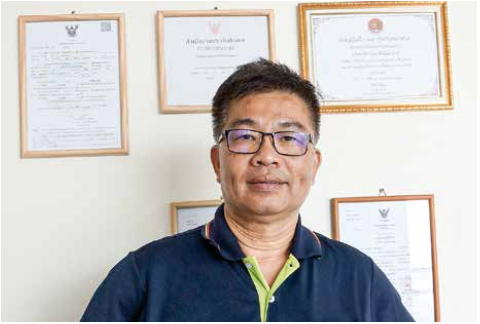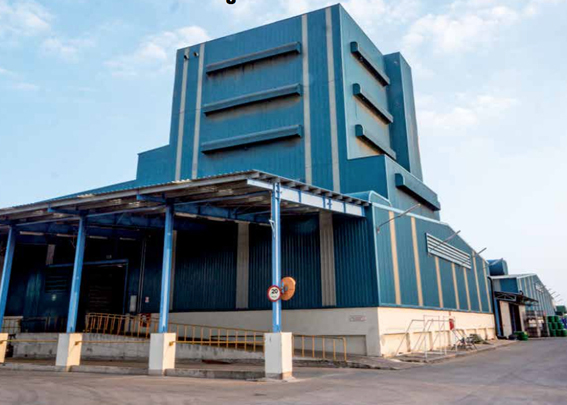TRF is carrying out a three-year plan focused on aqua feed quality improvement, growth performance enhancement and reduced mortality. Such a strategic shift, above all, will help to improve customer profitability, said Dr Preecha Ekthammasut, managing director.

Dr Preecha Ekthammasut
TRF is also set to hone technical competencies for their marketing and field service teams. Employees are trained and encouraged to keep up with changes in the industry.
Sales in 2020 will grow 15-20%, compared to overall market growth of 5-10% per annum. In a bid to retain cost competitiveness, for example, TRF’s purchasing team has already procured enough soybean meal and grain to last until the end of Q3.
TRF is GMP and HACCP certified by the Department of Fisheries and Ministry of Agriculture. It has also received Best Aquaculture Practice accreditation for its feed mills, hatchery, farm, processing and frozen facility and the latest ISO 9001 version 2015. It is Safety, Health and Environment (SHE) and Thai Labor- Standard 8001-2546 certified.
Although its rigorous production standards and quality assurance set TRF apart from other feed makers, feed quality alone is not enough to woo customers, he added.
Successful aqua feed makers bundle solutions including good quality fry, management, harvest and buyback. TRF already provides these services to customers.
Domestic fish farming faces a bearish trend. The country still imports salmon and saba-mackerel to fill the demand gap. Annual imports of salmon stand at around 40,000 tonnes and saba fillets 60,000 tonnes. Concerns about imported fish are mainly focused on the risk of antibiotic residues, he said.
The domestic market supplies a mere 600,000-700,000 tonnes per annum, mainly tilapia and catfish. Annual domestic consumption is estimated at over 800,000 tonnes.
Domestic fish farmers are at a disadvantage due to their small and fragmented scale of operations. Chinese tilapia operators, in comparison, have achieved greater economy of scale due to their more favourable farm size. The cost of imported tilapia fillets from China is less 35 baht/kg, whereas locally produced fillets cost around 45 baht/kg.
Sustainable aquaculture
TRF’s R&D team are developing new feed types to respond to new opportunities and growing demand for new aquaculture species.
“Due to convenience and performance, seabass producers have switched from feeding trash fish to commercial feed. Now, commercial feed represents around 50-60% of total seabass feed demand,” he said.
In evaluating potential products, TRF’s nutrition team conducts trials and studies fish behaviour. The selected species should be able to reproduce in captivity and thrive on complete feed.
Snakehead and clown featherback fish have been dropped from the list because neither species can breed in captivity and their fry have to be trapped from the wild.
TRF is committed to reducing single use plastic and uses wood pellets instead of coal.
Transparency and traceability
Thailand’s key shrimp export markets are the United States, Japan, Asia, Australia and the European Union.
Shrimp from Thailand is fully traceable all the way from the hatchery to the farm, along with all feed until harvest. The industry has overcome issues related to labour following a drastic revamp in 2015 to curtail illegal, unreported, and unregulated fishing.
TRF feed is traceable via lot number which contains details of ingredients used for feed production. The proof of fishmeal origin comes from collaboration with the Seafood Task Force– a Delaware-based non-profit corporation – to combat illegal, unreported and unregulated fishing.
Eligible fish meal must contain identifiable fishing locations, boat registration number, and legally employed crew members.
Traceability exercises are done periodically. Traceability time is less than four hours.
Upon harvest, the shrimp are tested for antibiotic residues. Any medications and additives applied must be registered and used only when necessary with the withdrawal period strictly observed. Purchase agreements are honoured regardless of price fluctuation.
Treating sick shrimp with medicated feed is less efficient because sick shrimp lose appetite. This increases antibiotic exposure to healthy shrimp because they also consume medicated feed. For this reason, TRF uses only antibiotic-free feed, said Dr Preecha.
Unfortunately, buyers have not shown a willingness to pay for such extra efforts. Thai shrimp producers will need to explore untapped niches such as organic shrimp or low stocking density, he said.
Thai shrimp producers also face non-tariff trade barriers and high tariffs while competitors are exempted. For example, China has tariffs on Thai shrimp, but exempts shrimp from Vietnam.
At present, the country produces around 300,000 tonnes of shrimp per annum. Domestic consumption is around 100,000 tonnes and the balance is exported.
Of total production, vannamei accounts for 280,000 tonnes and black tiger prawns 20,000 tonnes. Top world producers are China, India, Equador, Indonesia, Vietnam and Mexico.

